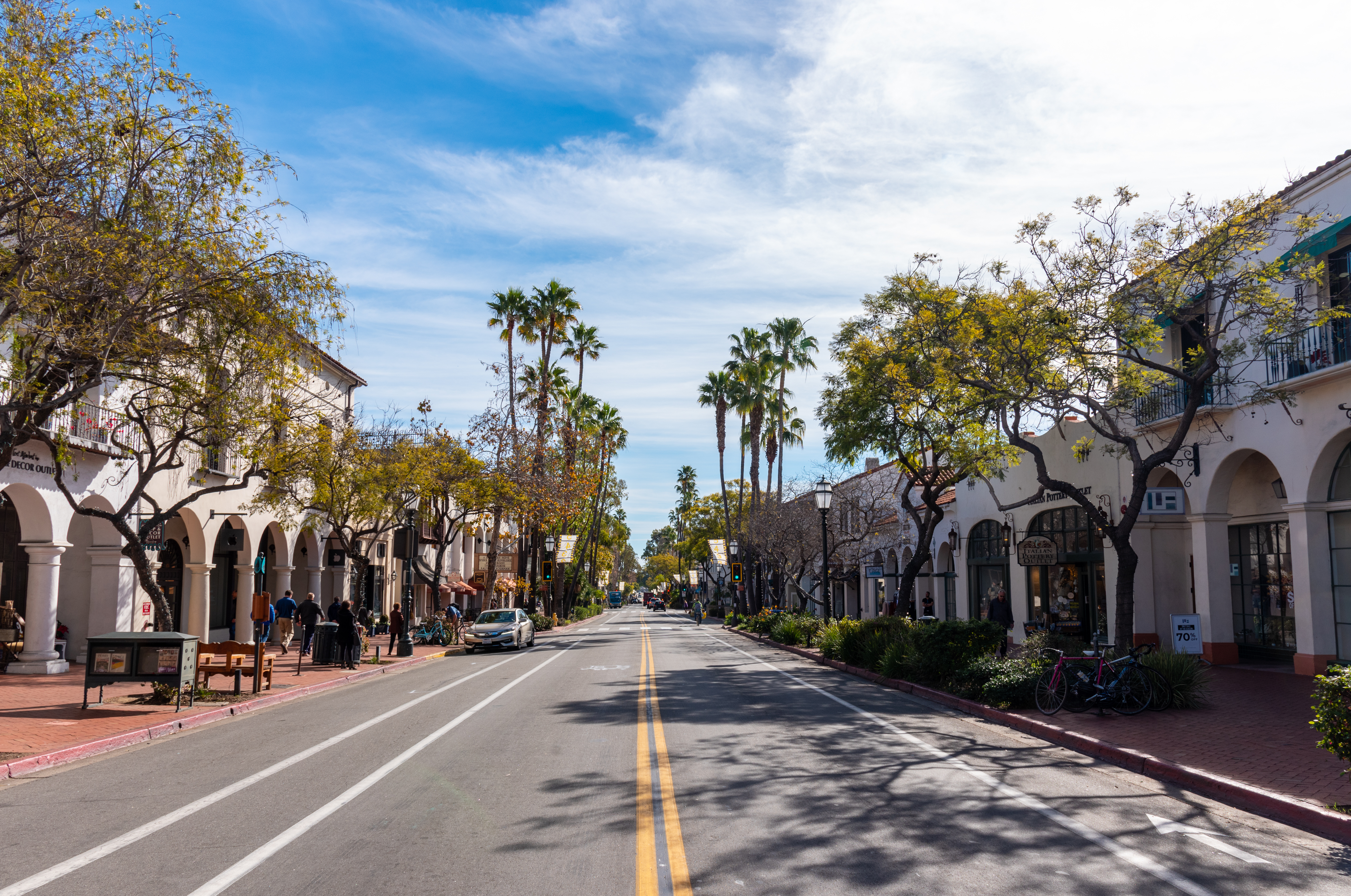Guidelines for New Housing Downtown
New Framework for Housing Can Ensure Well-Being of People and Environment

Santa Barbara, like many towns and cities in California, needs more housing, certainly more workforce and affordable housing. Since Santa Barbara is a built-out community, most new housing will have to be infill projects, mixed-use developments, and modification of existing buildings into living units. The greater density that will accompany the thousands of new housing units required by the state can fit and enrich the charm of Santa Barbara, but only if attractive, varied building styles offer a wide mix of living options.
To avoid increasing traffic congestion, this densification will have to de-incentivize cars and parking while making walking, biking, and public transportation more convenient, clean, aesthetic, and efficient. One way to help this shift is to decouple parking from living units. Such a decoupling will help those who are carless pay less in rent or a smaller purchase price for a unit.
The reenvisioning process for the downtown corridor along with the projected significant amount of new housing provides an unprecedented opportunity to create principles and goals to ensure the well-being of both people and the environment. This is of particular importance in the face of the emerging climate crisis with its ever-increasing challenges and unknowns.
One forward-looking measure to help this process is to create a set of green building specifications for all new and remodel projects to help guide architects, designers, developers, property owners, and the permitting process. Some of the items that need to be a part of these specifications are:
- Adaptive reuse and retention of as many components of existing buildings as possible to conserve planetary resources.
- Create tight, super-energy-efficient buildings and install rooftop or building-facade solar photovoltaic panels tied into battery storage or microgrid systems.
- Use nontoxic and carbon-negative materials.
- Incorporate such passive cooling strategies as good cross-ventilation through every habitable room, building interior vertical wells topped by chimneys to exhaust hot air, locating decks to shade windows below, adding motorized window-shading devices, setting windows back into exterior walls, and installing Casablanca ceiling fans. Other cooling measures could be rooftop gardens or vegetated facades.
- Make buildings all-electric by using heat pumps for climatization, heat pumps for water heating, and magnetic induction appliances for cooking.
- Take steps to minimize daily indoor temperature swings.
- Conserve water and find two or more uses for the same quantity of water.
How would the city get developers and property owners to adopt such specifications? One big incentive is to offer more units or greater building heights in exchange for compliance. This incentive is likely to be so attractive to developers that it might also entice them to create more workforce or affordable units, or even to create some community amenities such as daycare centers, pocket parks, or public art.



